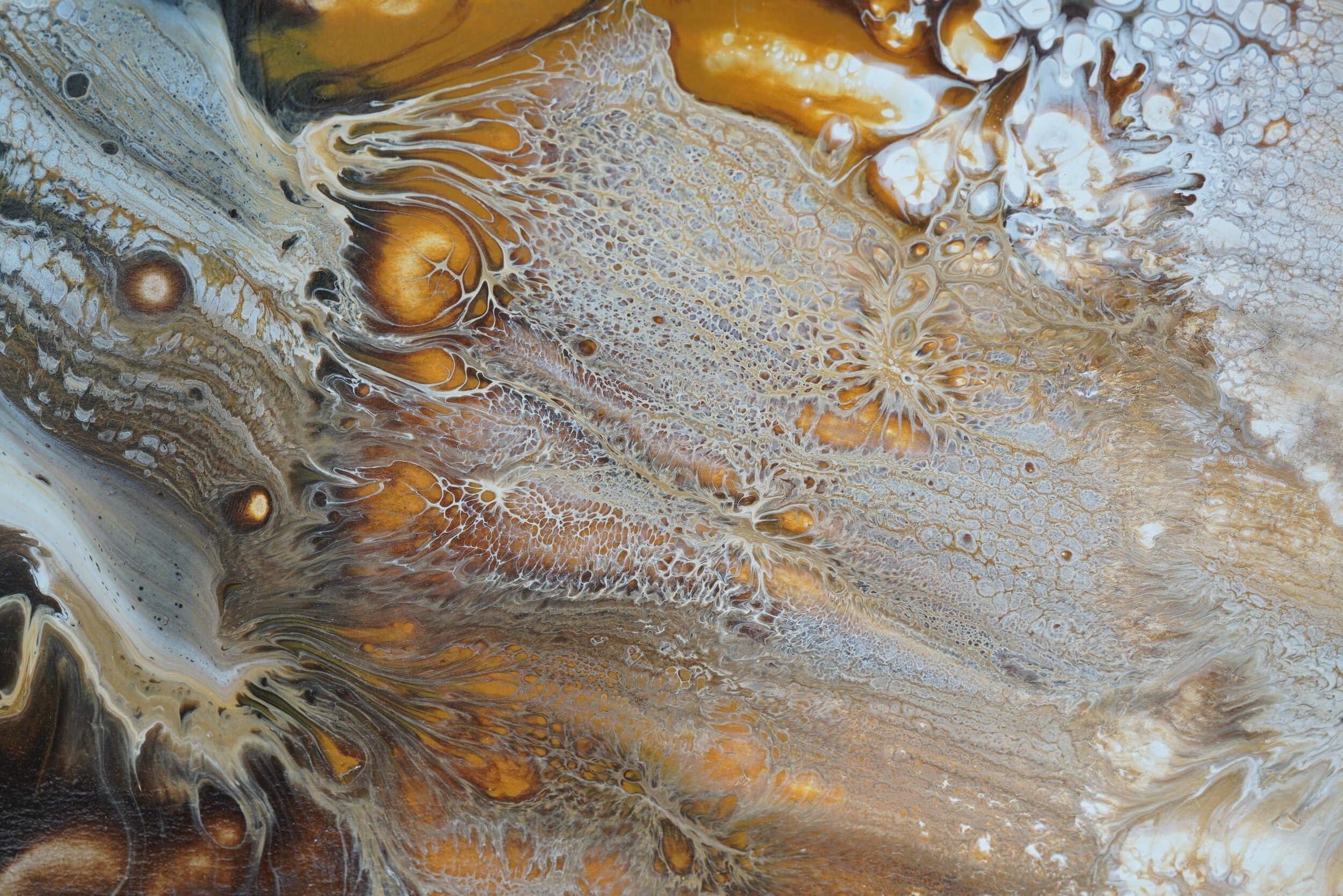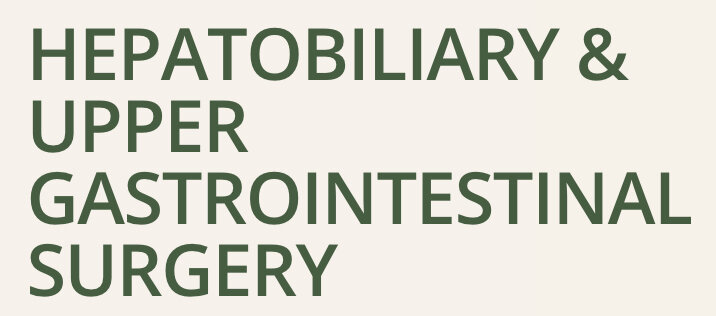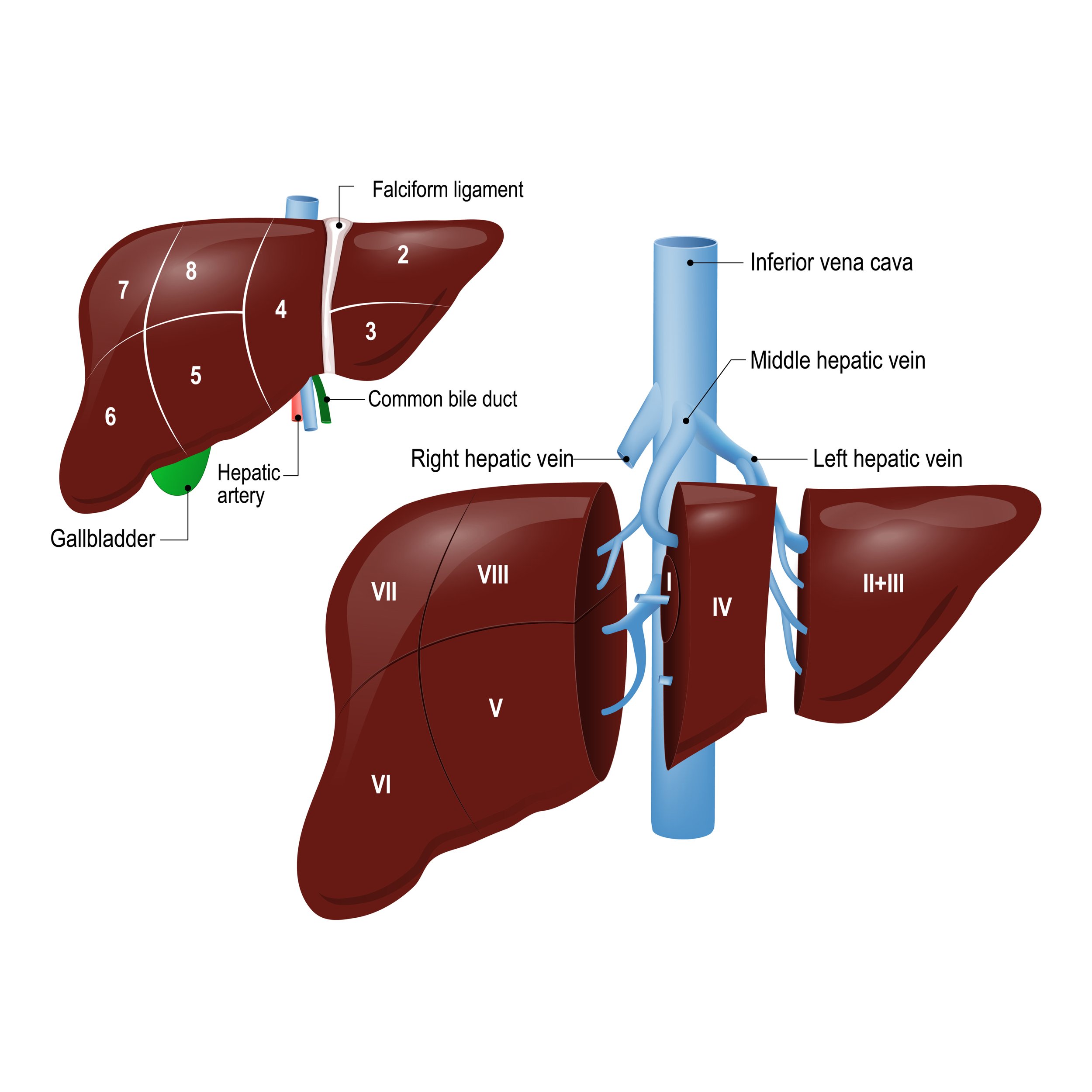
Liver Resection
What is a Liver Resection?
A liver resection is the surgical removal of part of the liver. This can be performed via laparoscopic (key-hole) surgery or by an open approach depending upon the requirements of the operation.
What purpose does the liver serve?
The liver is the largest internal organ in the body. It is located on the right side of the abdomen, just under the ribs, and on top of the stomach, right kidney and intestines.
It has many functions, including:
Production of bile, which helps carry away waste and break down fats in the small intestine during digestion.
Production of certain proteins.
Production of cholesterol and special proteins to help carry fats through the body.
Conversion of excess glucose into glycogen (the form in which glucose is stored in the body). This glycogen can later be converted back to glucose for energy.
Regulation of amino acid levels in the blood. Amino acids are the building blocks of proteins.
Processing of haemoglobin (a compound in red blood cells which transport oxygen around the body).
Clearing the blood of drugs and other substances e.g. alcohol.
Regulating blood clotting.
Who will need a liver resection?
A liver resection is the removal of part of the liver. This is usually required to remove a tumour, which can be benign (non-cancerous) or malignant (cancerous). The amount of liver removed depends on the size and location of the tumour in the liver. Up to 80% of the liver can be removed while maintaining normal function, as the liver is the only organ with the ability to regenerate (grow new tissue).
Understanding your Surgery
You may be told by your surgeon that they will remove specific “segments” of the liver. The picture to your right outlines the segment numbers with its corresponding positon. Alternatively, your surgeon may describe your procedure as a left or right resection.
What happens during the operation?
Once you have been formally admitted, a nurse will show you to a cubicle and ask you to change into a white hospital gown.
A doctor will then insert an intravenous cannula into the back of your hand. This will be used throughout the procedure and afterwards, to administer your anaesthetic, medications and fluids.
You may have an epidural (a small tube used to administer local anaesthetic and pain relief) inserted into what’s called the epidural space of your spine by an anaesthetist. This will be used to keep you pain free for several days after your procedure. If you do not have an epidural inserted, you will receive other forms of pain relief after your operation.
You will then be taken through to the operating suite and positioned on a hard table. Your nurse will attach you to specific equipment used to monitor your blood pressure and heart rate throughout the procedure.
An anaesthetic will then be administered through the needle in the back of your hand. Once asleep, your procedure will begin.
Your surgeon will make a large incision, in the shape of an L, mainly on the right side of your abdomen.
Your liver will be exposed, and blood flow temporarily blocked, to reduce the risk of bleeding.
The affected area of the liver will then be removed, ensuring that the whole tumour is removed.
Once the procedure is finished, and any bleeding has been controlled, blood flow to the liver will be re-established.
Internal sutures will be used to close your wound. Staples will be used to close the edges of your incision, ensuring the edges of skin heal together. A dressing called duoderm (a thin, semi-absorbent dressing) will be placed over the staples.
A drain tube will be placed into the wound bed. This will be connected to a plastic bag on suction, and will prevent any fluid from accumulating underneath your wound.
Your operation usually takes between 2-5 hours.
What to expect after your operation
Activity
You will return from theatre with on oxygen mask in place, until you are awake and alert. You may need to have a small amount of oxygen support, via nasal prongs, over the next few days. It is important to make sure you are able to take deep breaths and cough, so that you do not develop a chest infection. Your physiotherapist will educate you on chest exercises, which you should do every hour.
You will be encouraged to increase your activity levels, with the support of your nurse and physiotherapist. You will start out slowly, sitting in the chair for a short period on the day following surgery. Activity levels will be increased over the next few days, as you recover.
You will be required to wear TED stockings throughout your hospital stay. These are tight, white, thigh-length stockings that prevent fluid from accumulating in your legs, which can lead to blood clots. You will also be required to wear sequential compression devices (SCDs) for the first few days following surgery, only when you are in bed. These are thigh length cuffs, which are programmed to inflate and deflate, promoting blood flow and also helping to prevent blood clots.
Diet and fluids
You will return to the ward with intravenous fluids running into the cannula, providing hydration directly into your veins. This will run for a few days, until you doctor decides that your oral intake is adequate.
You will be allowed to drink fluids the day after your surgery. Over the next few days, your diet will slowly progress until you are able to tolerate a normal diet. This will be decided each day by your doctors, depending on your progress.
Good nutrition is an important factor in your recovery, as it is integral for wound healing. It is important that you inform your nurse and dietitian if there are any ways in which your meals in hospital can be improved, eg if there are particular foods you can’t eat, so that your nutritional intake can be maximised. Your dietitian may also provide you with nutritional supplements, eg Sustagen, to optimise your nutritional intake.
It is common to feel nauseous and vomit after having an anaesthetic. Your nurse will give you medications to reduce the risk of this occurring, and enable you to tolerating food and fluids.
Your doctors and nurses will monitor your bowel movements. It can be common for your bowels to take a few days to return to normal functioning after an anaesthetic. You may experience some bloating, but this should resolve once your bowel function returns to normal.
You will return from theatre with a urinary catheter, which will sit in your bladder and drain your urine. Your nurse will monitor the output, to ensure you are making enough urine. This catheter will stay in for a couple of days, and be removed with the orders of your doctors.
Pain Management
As previously mentioned, you may have an epidural in place to provide you with pain relief. This is a very thin catheter, which sits in the epidural space of the spine, and delivers local anaesthetic and a narcotic called fentanyl. This works by blocking the pain nerves to the brain. Your nurse will monitor you closely whilst your epidural is running, particularly your blood pressure and respiration.
You will be visited daily by the Acute Pain Service (APS), which consists of an anaesthetist and anaesthetic nurse. Your nurse will perform regular tests using ice, to assess the effectiveness of your epidural, and ensure the block doesn’t rise to high.
You will be able to request additional analgesia, such as paracetamol, tramadol and anti-inflammatories, on top of your epidural if required. As the epidural sits in the epidural space of your spine, it is important to look for any signs of infection. Your nurse and the APS will regularly assess the epidural site. It is important that you notify your nurse if you feel any discomfort at the site.
You will be able to lie comfortably, walk, and shower with the epidural in place. Once the APS deems it appropriate, your epidural will be removed by your nurse, and you will be provided alternative pain relief, in the form of tablets and injections as required this usually occurs around day 3, but the APS will assess each patient individually to make this decision.
Alternatively to an epidural, you may have a form of pain relief known as a local anaesthetic infusion. During the operation, a thin catheter is placed in the wound bed, much like the drain tube. This is connected to a pump, which will deliver local anaesthetic into the wound bed. Your nurse will closely monitor the catheter site for any infection. Once again, you can have additional pain relief such as paracetamol, tramadol and anti-inflammatories as required. You will be provided with alternative pain relief, in the form of tablets and injections, once your infusion has been stopped.
The third form of analgesia is known as Patient Controlled Analgesia (PCA). A PCA means you will be able to control the amount of pain relief you receive, and give yourself a dose as required. You will be connected to a pump, which will deliver narcotics (such as morphine or fentanyl) into the cannula in your hand. Your nurse will give you a button, which is connected to the pump, that you can press to deliver the pain relief. The pump will be programmed by your nurse so that you cannot receive too much pain relief. As with the epidural and local anaesthetic infusion, you will be able to request additional paracetamol, tramadol and anti-inflammatories as required. A PCA may also be used if you have uncontrolled pain after your epidural has been taken down.
You will be discharged with oral analgesia, which will be explained to you by your nurse and pharmacist.
Wound care
You will have a large wound in the shape of an L, down the middle and along the right side of you abdomen. This will be closed with staples, and covered with a duoderm dressing. This dressing will be removed a few days after your surgery.
Your staples will stay for 10 days after your operation. If you are still in hospital at this time, they will be removed by your nurse. Your wound will then be covered with steri-strips (a small, white tape). If you are discharged prior to this day, you will be given a staple remover and required to make an appointment with your local GP to have your staples removed.
You can get your wound wet in the shower, and gently pat it dry with a towel.
Your wound will be continually monitored by your doctors and nurses, for any signs of infection. This includes redness, swelling, discharge, or sudden increased pain.
You will return from theatre with a drain tube, which is inserted into the abdomen through the skin during the operation. These drains will be connected to a plastic drainage bag, and prevent any fluid from building up around your wound.
This is removed once drainage has reduced and your surgeon says this is okay.
You should refrain from any heavy lifting, driving, or any strenuous activity for at least 6 weeks after discharge. This will give your wound time to heal, and reduce the potential for your wound to breakdown.
At Discharge
As your recovery continues, your doctors will inform you of when you will likely be discharged. Please ensure that you arrange your mode of transportation home at this stage, to reduce any delays on the day of discharge.
Your doctors will review you on the morning round, and review your progress. If they are happy with your condition, they will allow you to go home. You will be given the opportunity to ask any questions at this time.
You will be given a follow up appointment to see your doctors at the outpatient clinic. If you need a medical certificate, your doctors will write one for you.
You will be followed up in the outpatient clinic to monitor your progress and for discussion regarding any ongoing treatment.
This information is intended as a guideline only. If you have any further questions or concerns, please ask your doctor.


